Geneva, 17 March 2025 – From Bangkok and Mumbai to Budapest and Abuja, World Wildlife Day 2025 celebrations kicked off this month. Under the theme: "Wildlife Conservation Finance: Investing in People and Planet," this year’s commemoration of wild plants and animals seeks to bring together global leaders, conservationists, students, artists, and the financial sector to explore innovative solutions for bridging the global wildlife conservation finance gap.
With over one million species threatened by extinction, securing sustainable financial resources for conservation has never been more urgent. Currently, annual global biodiversity conservation investments total USD 143 billion, but an estimated USD 824 billion is needed each year to adequately conserve and restore nature.
In Geneva, the CITES Management Authority of Switzerland Federal Food Safety and Veterinary Office (FFSVO), the Secretariat of the Convention on International Trade in Endangered Species of Wild Fauna and Flora (CITES), the United Nations Development Programme (UNDP), and the Geneva Environment Network (GEN) hosted the official World Wildlife Day 2025 United Nations Celebration on 3 March at the Palais des Nations. The event featured a high-level segment and reception hosted by the FFSVO and was complemented by activities at the Conservatory and Botanical Gardens of Geneva and the Bioparc Genève.
CITES Secretary-General Ivonne Higuero opened the event, welcoming participants from the Permanent Missions to the United Nations and other Organizations in Geneva, the International Graduate Institute of Geneva, other organizations based in Geneva and online participants.
“Investing in wildlife is just as much about conserving species as it is about securing the future of a sustainable planet and for current and future generations,” said the Secretary-General. “This World Wildlife Day, we want to highlight how wildlife conservation finance is the bridge between ambition and action, ensuring that nature thrives alongside humanity."
Distinguished delegates from South Africa, Switzerland and Uzbekistan highlighted the necessity of innovative financing mechanisms and collaboration to ensure lasting conservation impact.
H.E. Ambassador Mxolisi Nkosi, Permanent Representative of South Africa to the United Nations and other Organizations in Geneva, emphasized the critical role of wildlife in ecosystems and livelihoods. He highlighted the impact of the Rhino Bond on not only the conservation of black rhinos, but also the employment and tourism opportunities for underserved and rural communities with clear targets for investors to contribute to in South Africa.
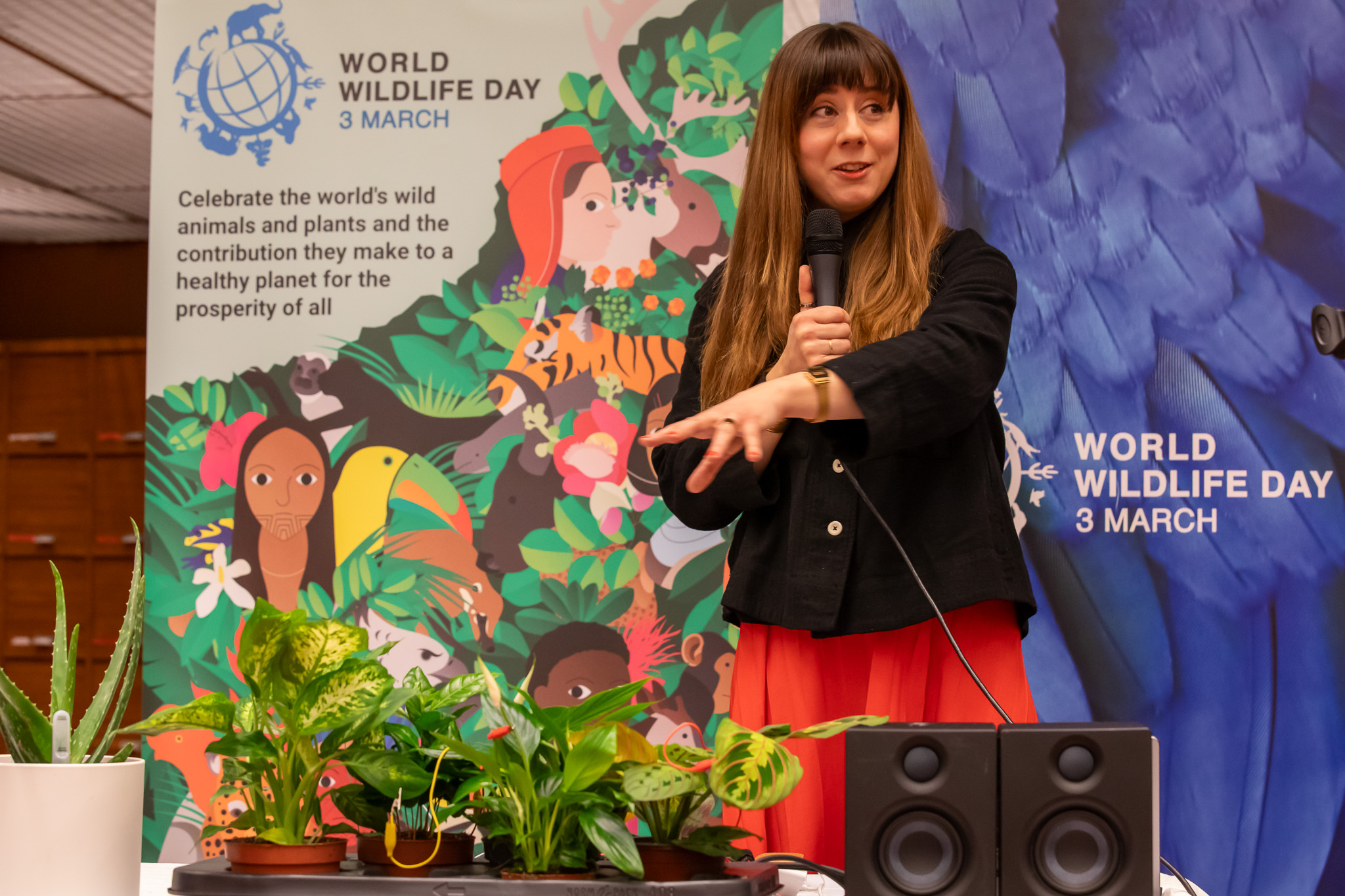 H.E. Ambassador Eldiyor Toshmatov, Permanent Representative of the Republic of Uzbekistan to the United Nations and other Organizations in Geneva, highlighted Uzbekistan’s enthusiasm as the upcoming host of the Conference of the Parties to CITES (CITES CoP20), underscoring the importance of international cooperation. Mr. Toshmatov firmly asserted that investing in wildlife conservation is a moral imperative.
H.E. Ambassador Eldiyor Toshmatov, Permanent Representative of the Republic of Uzbekistan to the United Nations and other Organizations in Geneva, highlighted Uzbekistan’s enthusiasm as the upcoming host of the Conference of the Parties to CITES (CITES CoP20), underscoring the importance of international cooperation. Mr. Toshmatov firmly asserted that investing in wildlife conservation is a moral imperative.
H.E. Ambassador Julien Thöni, Deputy Permanent Representative of Switzerland to the United Nations and other Organizations in Geneva, reaffirmed Switzerland’s commitment to financing wildlife conservation and supporting innovative financial solutions to meet the goals that the world has set for wildlife.
UNDP Administrator Achim Steiner, in a video message, emphasized, “The survival of wildlife and their natural habitats is essential to securing a thriving future for all life on Earth. UNDP’s Nature Pledge drives this vision by supporting over 140 countries to implement the Kunming-Montreal Global Biodiversity Framework.” He further noted that UNDP’s groundbreaking Biodiversity Finance Initiative has already mobilized USD 1.5 billion in new biodiversity financing to date.
International Union for Conservation of Nature (IUCN) Director-General Grethel Aguilar, in a video message, presented examples of how IUCN is unlocking new opportunities to direct investments into conservation projects that benefit people and the planet, including the WALD Innovation Facility, the Blue National Capital Financing Facility and the Blue Carbon Accelerator.
World Bank Group Senior Managing Director Axel Van Trotsenburg, in a video message, stressed the importance of investing in nature for the economy and to support the mission of the World Bank Group to end poverty on a livable planet, with the World Bank Global Wildlife Program and the “Rhino Bond” as examples of ongoing efforts.
Adding a musical dimension to the event opening, Helen Anahita Wilson, a plant sound artist of SOAS University of London, captivated the audience by live-transforming the bioelectrical signals of medicinal and adaptogenic plants into music.
Bringing together key wildlife conservation leaders
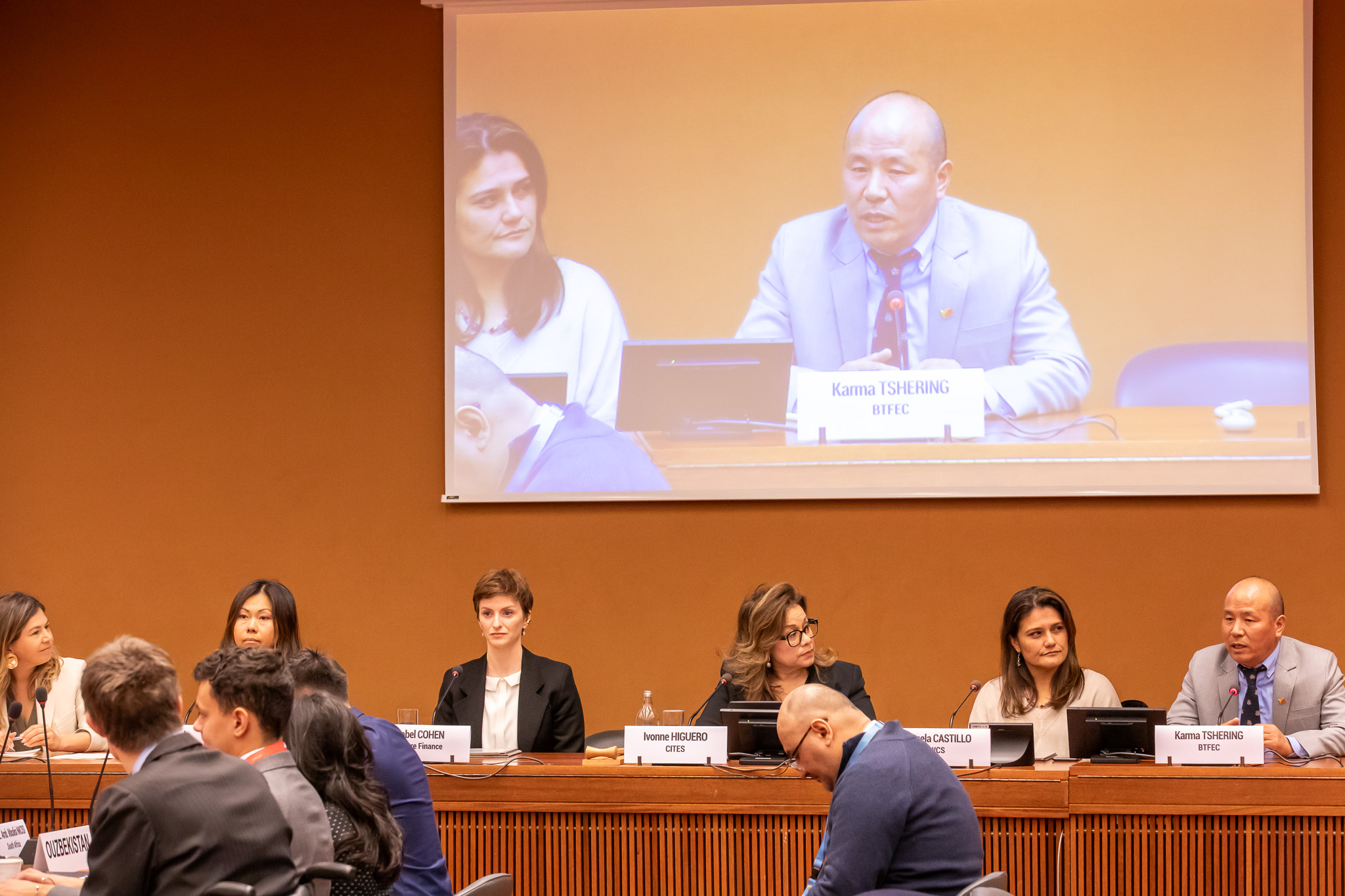 A video intervention from the CITES Global Youth Network encouraged young leaders to engage in sustainable wildlife trade and conservation efforts. This was followed by an expert panel discussion, moderated by CITES Secretary-General Higuero, exploring the evolving landscape of conservation finance at the species level.
A video intervention from the CITES Global Youth Network encouraged young leaders to engage in sustainable wildlife trade and conservation efforts. This was followed by an expert panel discussion, moderated by CITES Secretary-General Higuero, exploring the evolving landscape of conservation finance at the species level.
Karma Tshering of the Bhutan Trust Fund for Environmental Conservation highlighted the long-term benefits of trust funds for environmental conservation, based on lessons learned from Bhutan in establishing the world’s first wildlife conservation trust fund.
Pamela Castillo of the Wildlife Conservation Society emphasized the importance of financing rural women and women in extreme poverty, as well as key enabling conditions for effective policy and partnerships in this effort.
Isobel Cohen of Nature Finance highlighted how financial structures can connect local bioeconomy initiatives to global markets through supportive policy frameworks.
Gwen Yu of J.P. Morgan analyzed the challenges for financial institutions of scaling financial instruments such as debt-for-nature swaps and outcome bonds, balancing risk, impact, and profitability.
Jessica Smith of the UN Environment Programme Finance Initiative (UNEP FI) explored emerging innovations in banking and insurance that support nature-positive investments and help address human-wildlife conflict.
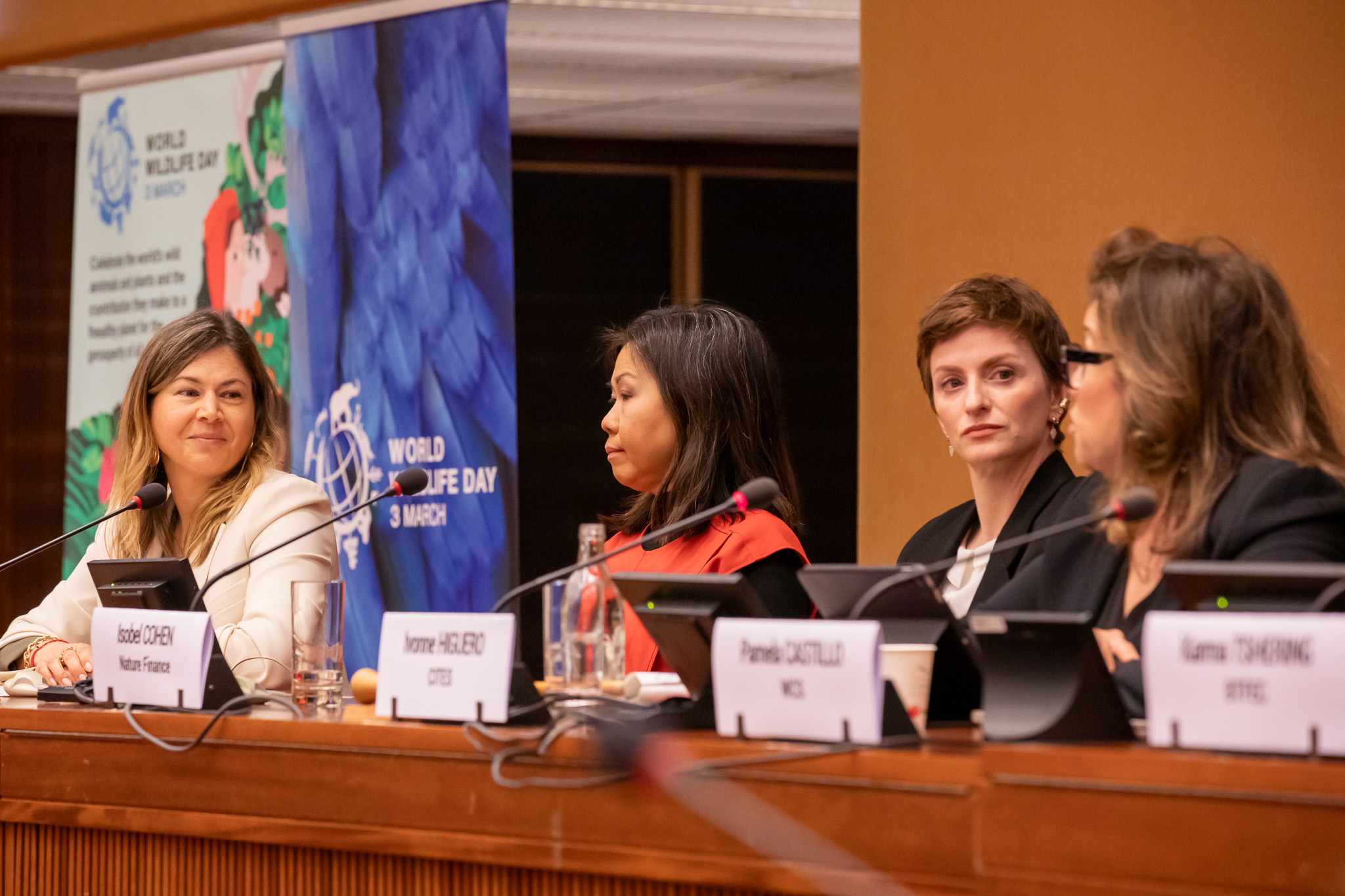 Following a short question-and-answer session with students from the International Graduate Institute of Geneva, statements from the floor were delivered by high-level Member State representatives.
Following a short question-and-answer session with students from the International Graduate Institute of Geneva, statements from the floor were delivered by high-level Member State representatives.
H.E. Ambassador Tovar Da Silva Nunes, Permanent Representative of Brazil to the United Nations and other Organizations in Geneva, emphasized in the crucial importance of multilateral cooperation, calling for the mobilization of resources from all available sources.
H.E. Ambassador Francisca E. Méndez Escobar, Permanent Representative of Mexico to the United Nations and other Organizations in Geneva, reaffirmed Mexico’s commitment to findinginnovative finance solutions that will allow governments, the private sector, and other key sectors to collaborate on the use of wildlife and support communities that depend on it.
H.E. Ambassador Mireille Sarah Nzenze, Permanent Representative of the Gabonese Republic to the United Nations and other Organizations in Geneva, presented the ambitious goal of Gabon of protecting 30 per cent of its ecosystems by 2030 and sustainably managing its natural resources.
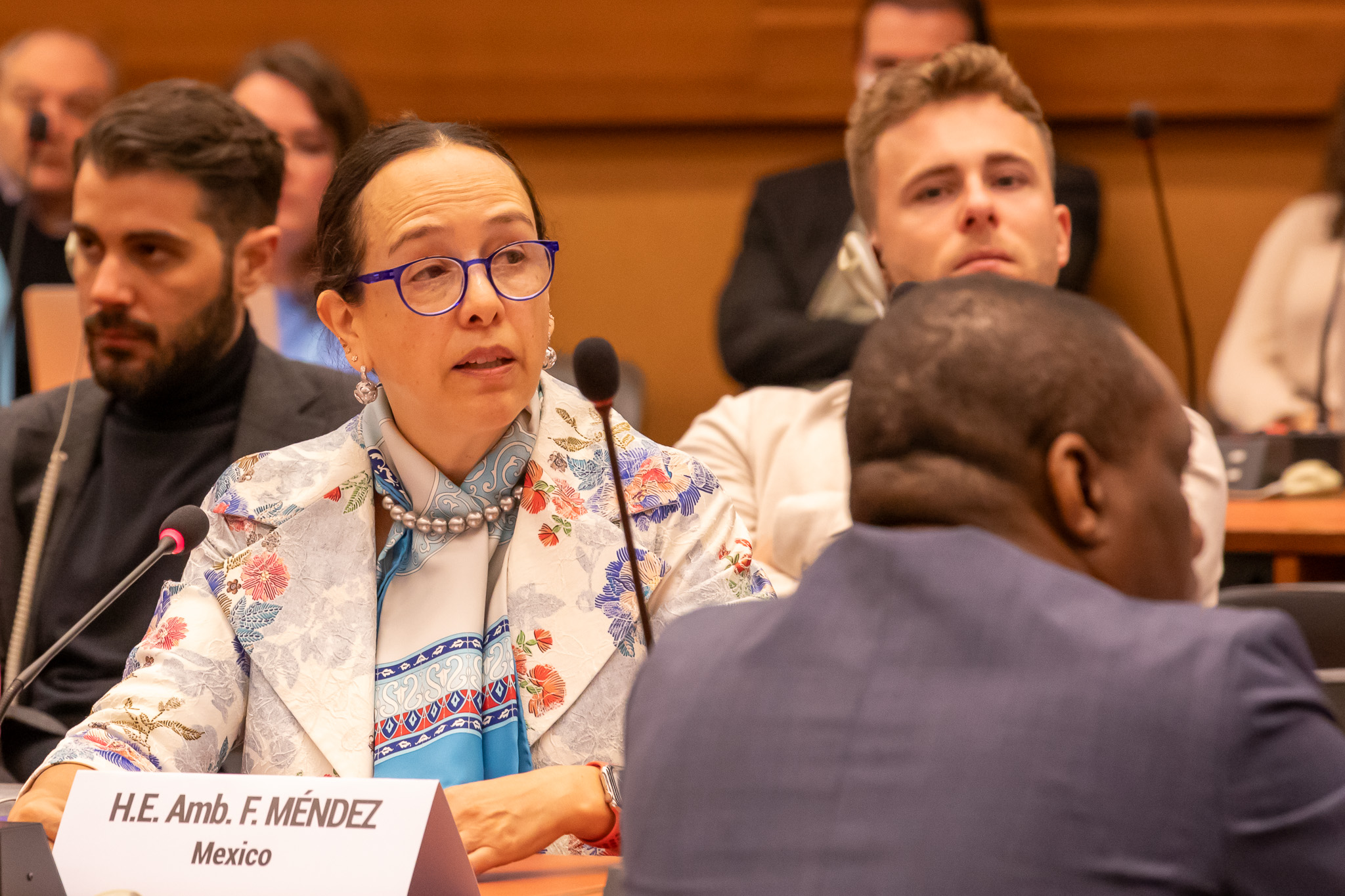 H.E. Ambassador Pratana Disyatat, Deputy Permanent Representative of Thailand to the United Nations and other Organizations in Geneva, elaborated on the efforts of Thailand, the original proponent of World Wildlife Day in 2013, to allocate half of the annual budget of the Ministry of Natural Resources and Environment to wildlife conservation, forest management and the rehabilitation of the coral reefs.
H.E. Ambassador Pratana Disyatat, Deputy Permanent Representative of Thailand to the United Nations and other Organizations in Geneva, elaborated on the efforts of Thailand, the original proponent of World Wildlife Day in 2013, to allocate half of the annual budget of the Ministry of Natural Resources and Environment to wildlife conservation, forest management and the rehabilitation of the coral reefs.
Showcasing wildlife through art and film
Every year, the International Fund for Animal Welfare (IFAW) International Youth Art Contest showcases the artistic work from youth from around the world relating to the theme of World Wildlife Day.
This year’s contest saw expansive participation with over 3,000 entries across 140 countries. Keira Cheng from the United States of America was recognized as the overall winner and winner for the 15-18 age category.
Announcing the finalists and winners of the 2025 contest, IFAW CEO Azzedine Downes remarked: "Movements which inspire hope have the power to spread exponentially. And bringing people around the world together for shared causes, like conserving the world’s wildlife, can produce outcomes far greater than the sum of their parts.”
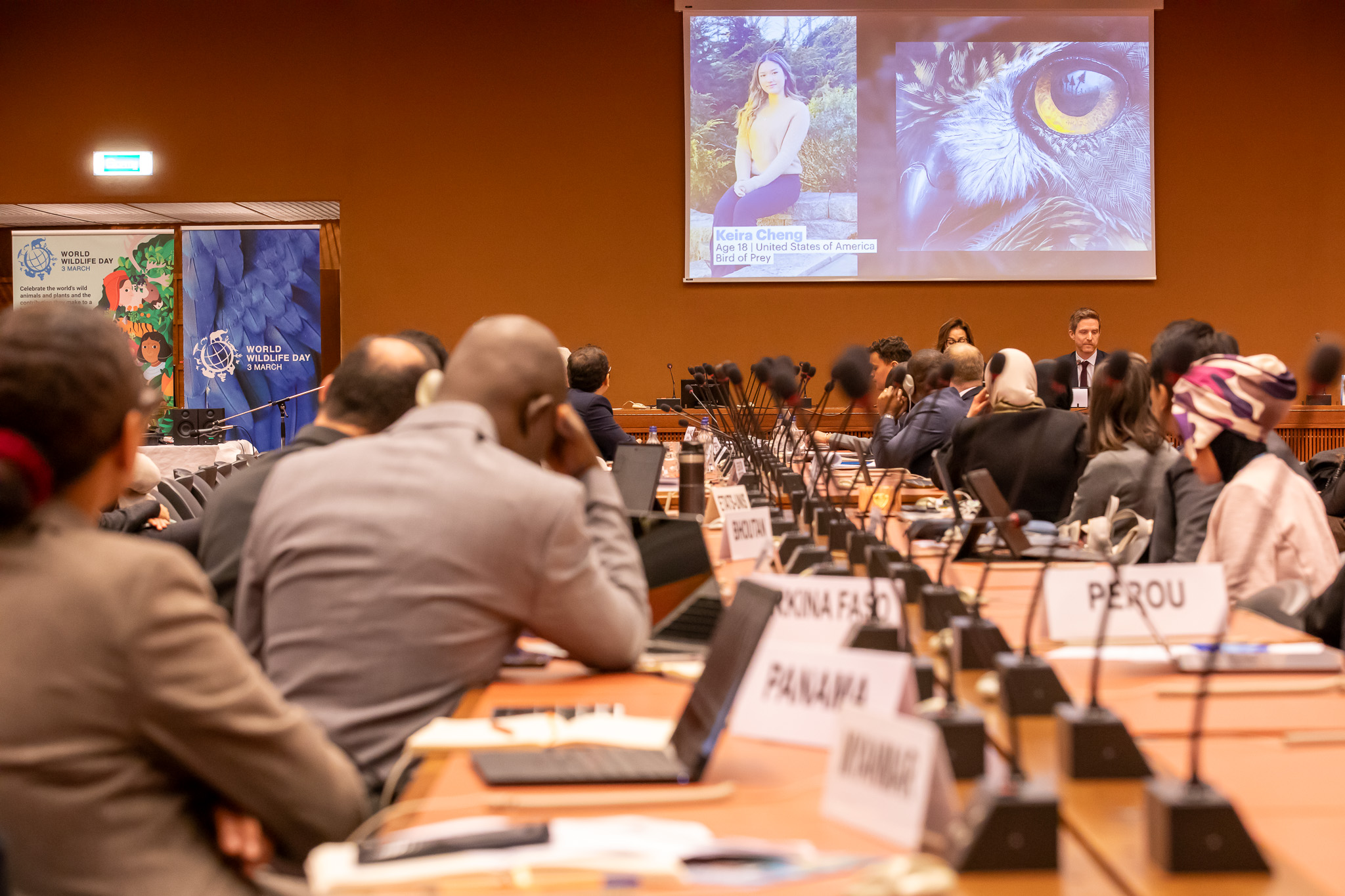 The event’s artistic segment closed with the announcement of the selected films for the World Wildlife Day 2025 Jackson Wild Film Showcase. This year’s showcase set out to exchange ideas, showcase solutions and advance the conversation on how innovative finance can contribute to halting biodiversity loss, raising the interest of private sector stakeholders to invest in wildlife conservation, and creating a sustainable future.
The event’s artistic segment closed with the announcement of the selected films for the World Wildlife Day 2025 Jackson Wild Film Showcase. This year’s showcase set out to exchange ideas, showcase solutions and advance the conversation on how innovative finance can contribute to halting biodiversity loss, raising the interest of private sector stakeholders to invest in wildlife conservation, and creating a sustainable future.
"The films in this year’s showcase highlight the critical role that innovative finance plays in conservation," said Jackson Wild Interim Executive Director Christie Quinn. "Film has the unique ability to bring complex topics—like conservation finance—to life, making them more accessible and compelling. These stories shed light on creative solutions that are making a real difference, demonstrating how investment in nature can drive meaningful change for both people and wildlife."
The 2025 Film Showcase can be accessed for free until the end of the year here.
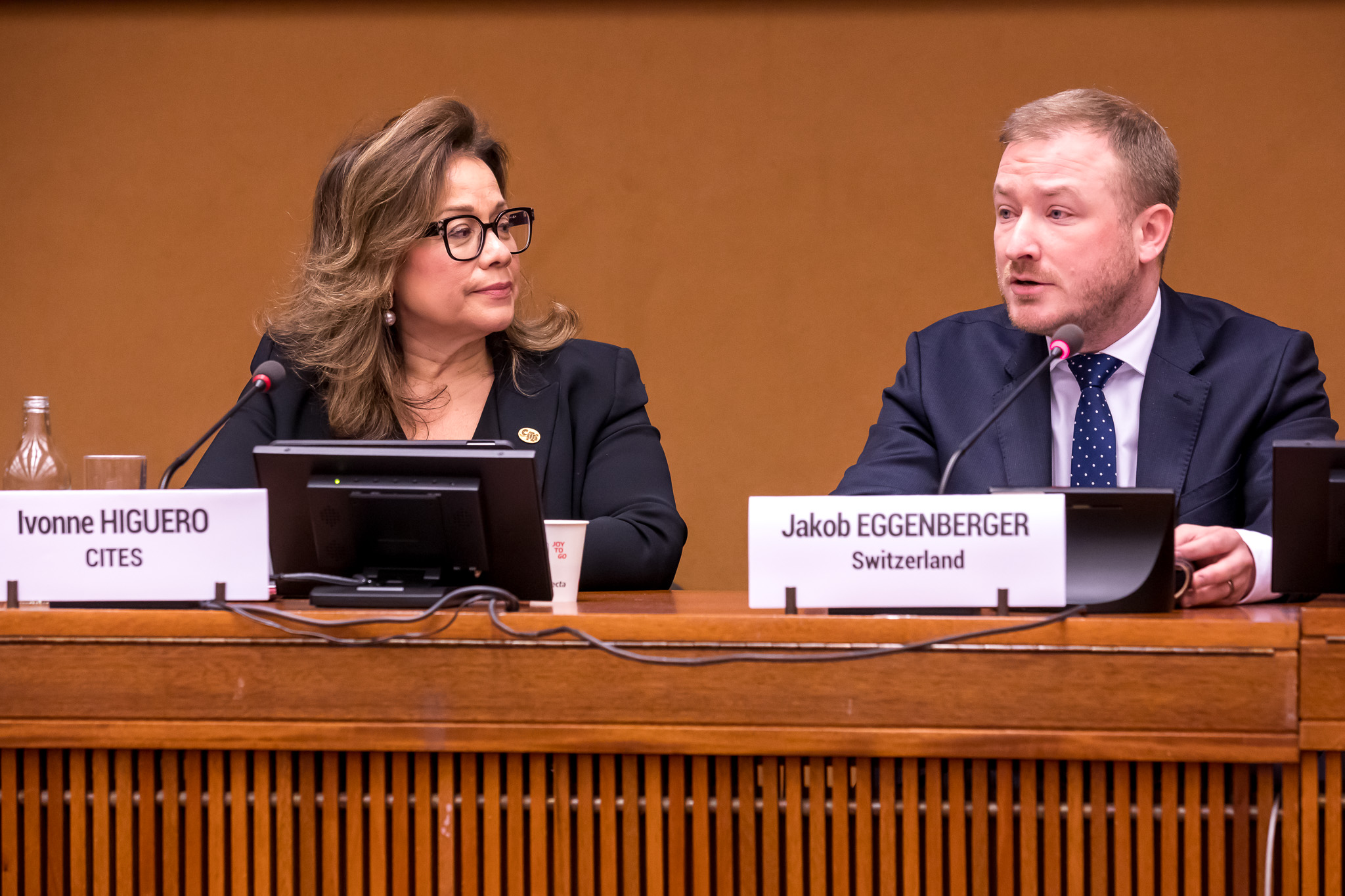 Looking Ahead
Looking Ahead
Ending the event on a hopeful and ambitious note, Species Conservation and International Trade, Switzerland Federal Food Safety and Veterinary Office Head Jakob Eggenberger said:
“Switzerland sees investing in the next generation by raising awareness and building knowledge as an integral part of future species conservation, because it is they who will carry this important responsibility forward in the coming years. We are convinced that it is essential for the international community to work together over the next 50 years to continue to strengthen CITES, and thus to invest in the planet and its people.”
Beyond the Palais des Nations
The celebration of World Wildlife Day 2025 extended to other wildlife conservation institutions based in Geneva.
On 1 March, the CITES Secretariat and the Geneva Environment Network partnered with the Conservatory and Botanical Gardens of Geneva to offer guided visits by Curator of the Phanerogamy Herbarium Fred Stauffer of the extinct plants in the herbarium. Director of the Conservatory Nicola Schoenenberger and CITES Secretary-General Higuero shared opening remarks.
On 3 March, the Bioparc Genève welcomed participants to the conservation and veterinary center for guided visits of the lemurs, macaws, reptiles and other animals as part of their theme “Learn, Think, Act for Wildlife”. Bioparc Genève Foundation President Christina Meissner, Bioparc Genève Director Tobias Blaha, CITES Secretary-General Higuero and Geneva Environment Network Director Diana Rizzolio shared welcome remarks.
As the world renews its conservation commitments, innovative approaches to financing are emerging to contribute to progress in the achievement of the Sustainable Development Goals and the Kunming-Montreal Global Biodiversity Framework targets. World Wildlife Day 2025 serves as a platform for reflection, dialogue, and collaboration, emphasizing the need for robust financial mobilization and cooperation across governments, financial institutions, private investors, businesses, civil society, Indigenous Peoples, local communities, women, and youth to conserve our planet’s biodiversity for future generations.
Watch the UN World Wildlife Day 2025 Celebration online here.
Find more photos of World Wildlife Day 2025 in Geneva here.
A special message from WILDLABS: The Conservation Technology Network, for World Wildlife Day 2025 here. Building on the 2024 theme of digital innovation, WILDLABS showcases its programs, inspiring technological ingenuity and gender inclusion in wildlife conservation finance.
____________________
Editor’s Notes:
For enquiries, please contact wildlifeday@un.org
About United Nations World Wildlife Day
On 20 December 2013, the 68th session of the United Nations General Assembly proclaimed 3 March as World Wildlife Day to celebrate and raise awareness of the world’s wild fauna and flora. The date is the day of the signature of the Convention on International Trade in Endangered Species of Wild Fauna and Flora (CITES) in 1973. World Wildlife Day has become the most prominent global annual event dedicated to wildlife.
Follow World Wildlife Day on:
- Flickr (photo gallery)
- X (formerly Twitter)
- YouTube
Find out more: https://wildlifeday.org/
About CITES
The Convention on International Trade in Endangered Species of Wild Fauna and Flora (CITES) was signed on 3 March 1973 and entered into force on 1 July 1975. With 185 Parties (184 countries + the European Union), it remains one of the world's most powerful tools for wildlife conservation through the regulation of international trade in over 40,900 species of wild animals and plants. CITES-listed species are used by people around the world in their daily lives for food, health care, furniture, housing, tourist souvenirs, cosmetics or fashion. CITES seeks to ensure that international trade in such species is sustainable, legal and traceable and contributes to both the livelihoods of the communities that live closest to them and to national economies for a healthy planet and the prosperity of the people in support of UN Sustainable Development Goals.
Follow CITES on social media:
Find out more: https://cites.org/eng